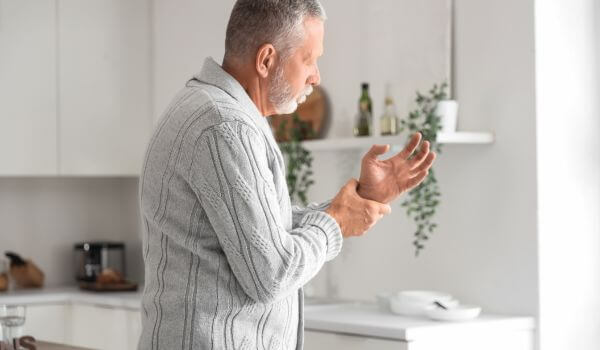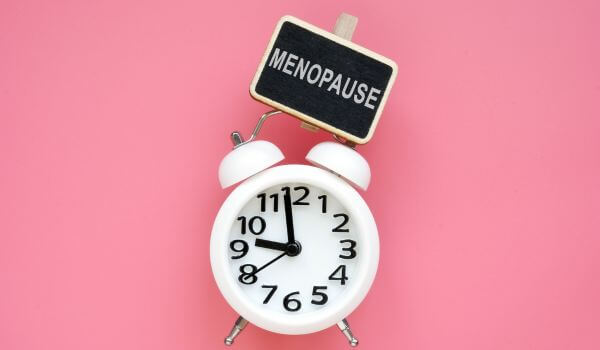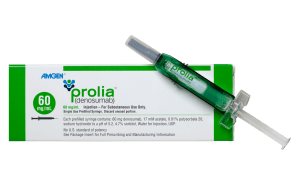 Uncomplicated urinary tract infections (UTIs) are a common health issue, affecting millions of people worldwide, particularly women. More than half of adult women will experience at least one UTI in their lifetime, with many facing recurring infections, which can significantly impact daily life.
Uncomplicated urinary tract infections (UTIs) are a common health issue, affecting millions of people worldwide, particularly women. More than half of adult women will experience at least one UTI in their lifetime, with many facing recurring infections, which can significantly impact daily life.
Traditionally, a doctor’s visit was required to access treatment. Recent changes in Australia now allow pharmacists to prescribe antibiotics for uncomplicated UTIs, making it easier and faster for patients to receive the care they need. Why? Based on patient history and symptoms, pharmacists can accurately diagnose and treat UTIs without a physical examination. Of course, complicated UTIs require further medical attention, but for the majority of cases, this new approach has been a game-changer, particularly for women who have recurrent uncomplicated UTIs and don’t want to spend hours every month waiting for medical appointments.
But what exactly is an uncomplicated UTI, and how does it differ from a complicated one? This article explores the causes, symptoms, and treatment options for uncomplicated UTIs, with a focus on managing recurrent infections.
What is an uncomplicated urinary tract infection?
An uncomplicated UTI occurs when bacteria infect the lower urinary tract in otherwise healthy, non-pregnant women without underlying medical conditions. Common symptoms include frequent urination, a sudden urge to urinate, burning or pain while urinating, and discomfort in the lower abdomen.
What is a complicated UTI?
A complicated UTI is a urinary tract infection that doesn’t meet the definition of an uncomplicated UTI. Doctors consider a UTI complicated if it’s harder to treat or if it may lead to serious health problems. These types of UTIs can also involve the kidneys or ureters. Sometimes, a UTI is considered complicated if it’s caused by bacteria that don’t usually lead to UTIs.
What age groups are more likely to have UTIs?
Postmenopausal women are about twice as likely to have recurring UTIs compared to younger, premenopausal women. In women who have gone through menopause, there are factors that can increase the likelihood of recurring urinary tract infections. These include urinary incontinence, a history of UTIs before menopause, leftover urine in the bladder after going to the bathroom, and genetics. Menopause also brings changes like vaginal dryness and shifts in the balance of bacteria in the urinary system, both of which make infections more common. Lower estrogen levels after menopause reduce the presence of helpful Lactobacillus bacteria, making it easier for harmful bacteria to grow and cause problems.
What causes uncomplicated UTIs?
Urinary tract infections are usually caused by bacteria from the gut, especially gram-negative bacteria, that have adapted to survive in the urinary system. In the past, experts believed UTIs started when harmful bacteria from the gut or rectum traveled to the urethra, moved up into the bladder, and caused an infection. Because of this, doctors focused on removing any harmful bacteria found in urine.
However, research now shows that bacteria can sometimes be present in urine without causing symptoms. Doctors now typically treat bacteria in urine only if the patient shows symptoms of a urinary tract infection. Recurrent UTIs may happen because bacteria can hide inside the urinary tract, staying there and causing the infection to come back later. This idea helps explain why some UTIs keep returning even after treatment.
How are uncomplicated UTIs diagnosed?

If someone keeps having symptoms, it’s a good idea to do a urine culture for more accurate treatment and to figure out if it’s really a UTI or another condition, like an overactive bladder, interstitial cystitis, vaginal issues, or menopause-related changes.
Treatment of an uncomplicated UTI
Treatment often starts with an antibiotic. Commonly used antibiotics include:
For some patients, a “wait and see” approach might also be an option. This means they would be given a prescription for antibiotics, but only take them if symptoms get worse or don’t improve while waiting for test results. Doctors should work closely with patients to discuss the pros and cons of starting antibiotics immediately versus waiting.
If symptoms go away, there’s no need to do another urine test to confirm the infection is gone. However, if symptoms don’t improve after treatment or if new, more serious symptoms develop, another urine test and culture should be done. At that point, it might be necessary to check for any structural or functional problems in the urinary system if this hasn’t already been done.
Increasingly, as women get used to recurrent bouts of UTI, they are turning to mild over-the-counter preventative treatments like UtiPro Plus, which is approved in the EU to target the source of infection in the intestine. It creates a protective layer that reduces the growth of uropathogenic bacteria in the intestine.
How to prevent UTIs from coming back
After treating a UTI, the next step is to focus on preventing it from coming back. There are several ways to prevent recurring UTIs. These strategies fall into three main categories: (1) lifestyle changes, (2) non-antibiotic options, and (3) antibiotic-based prevention. It’s recommended to try lifestyle and non-antibiotic methods first, depending on the patient’s situation and preferences. However, if infections are happening often or are more severe, antibiotics might be needed earlier. In many cases, a combination of methods is used to create a healthier environment and reduce the need for long-term antibiotics.
Behavioral Strategies
- Drink 2–3 liters of water daily to stay hydrated.
- If someone has trouble fully emptying their bladder due to pelvic floor issues, pelvic floor physical therapy (PT) can help. PT can help reduce the chances of urinary tract infections in people who have trouble fully emptying their bladder due to tight pelvic floor muscles.
- Another factor that can raise the risk is using spermicide, so doctors often recommend avoiding spermicide if someone keeps getting UTIs.
Many strategies to prevent UTIs focus on keeping the perineal area clean, but there isn’t much evidence to show that hygiene habits actually affect how often UTIs occur.
Non-Antibiotic Strategies
- Vaginal estrogen such as Premarin or Vagifem can be used to improve bladder health. Research shows that all types of vaginal estrogen products can help reduce UTIs.
- Taking cranberry supplements (36–72 PACs per day) may help maintain bladder health.
- Methenamine is another non-antibiotic option. Methenamine is a medicine used to prevent urinary tract infections without relying on antibiotics. It comes in two forms, called hippurate and mandelate, which help create an acidic environment in the body. In this environment, methenamine breaks down into ammonia and formaldehyde, which kill bacteria by breaking down their proteins. Because of how it works, bacteria can’t build resistance to methenamine.
Other options, like D-mannose and probiotics, are sometimes used too. While there isn’t as much strong evidence to recommend them, they may still be helpful if a patient wants to try them.
Antibiotic Prevention Strategies
Using antibiotics to prevent recurrent urinary tract infections is one of the best-supported methods and can work well for patients who are carefully chosen and informed about the treatment. For women, whether before or after menopause, who are experiencing more frequent infections, starting with antibiotics and then switching to non-antibiotic methods after a few months without infections can be a helpful approach.
- After sexual activity, a single dose of antibiotics like Macrobid, Bactrim/Septra, or Keflex can help prevent infections.
- For ongoing prevention, low daily doses of antibiotics may be used, either daily or a few times a week.
It’s important to adjust these treatments based on individual factors like kidney function, allergies, or past lab results. Always consult with a healthcare professional before starting any of these strategies.
What about cranberry juice as a treatment for uncomplicated UTIs?
Cranberries are a natural option to help prevent recurring urinary tract infections in both men and women of all ages. They contain compounds called proanthocyanidins (PACs), which are believed to stop bacteria from sticking to the bladder walls. Studies suggest that cranberry supplements need at least 36 mg of soluble PACs to work effectively. Since these supplements are not regulated by the FDA, their effectiveness can depend on the strength and type of cranberry product used. It’s also very important to note that cranberry supplements or cranberry juice cannot treat a UTI once it has taken hold, and seeking medical advice is the better option to ensure the infection does not spread or worsen. Cranberry is not a replacement for antibiotics.
Symptom management of uncomplicated UTIs
Symptoms of cystitis, including pain and dysuria, are often managed with non-prescription treatments and other self-care strategies.
- Urinary alkalinizers (e.g., sodium bicarbonate): These work by making urine less acidic, which can help reduce the pain during urination. However, there isn’t much solid evidence to prove they’re effective or safe for cystitis symptoms. People should consider their own preferences when deciding to use them, but they shouldn’t be used alongside nitrofurantoin.
- Pain relievers (e.g., Advil and Tylenol): UTI symptoms often come from inflammation caused by prostaglandins in the urinary system. Painkillers can help manage the discomfort of acute cystitis and should be offered when appropriate.
- D-Mannose: This sugar is believed to stop bacteria from sticking to the urinary tract. Some research suggests it could help with cystitis symptoms, but the evidence is limited and doesn’t confirm if it works well for either preventing or treating UTIs.
- Probiotics: Probiotics are thought to restore healthy bacteria in the gut and vagina, potentially lowering the chance of UTIs. Some studies show they might reduce recurring UTIs, but the overall evidence is inconsistent and limited.
FAQs
How do I know if my UTI is complicated or uncomplicated?
UTIs are classified as uncomplicated or complicated. Uncomplicated UTIs, also called cystitis or lower tract infections, occur in healthy individuals and are typically easier to treat. Complicated UTIs include infections in men, pregnant women, immunocompromised individuals, or those with urinary tract abnormalities. These infections can lead to serious complications like urinary retention, sepsis, or organ dysfunction and carry a higher risk of severe illness or death.
What is the hardest UTI to treat?
Overall, women are more likely to get UTIs. However, UTIs in men can be harder to treat and may need longer antibiotic treatments. This happens because the bacteria causing the infection can hide in the tissues of the prostate gland.
How do I know if my UTI is serious?
If not treated, lower urinary tract infections (UTIs) can spread to the upper urinary tract. This can result in more severe symptoms, including fever, chills, nausea, vomiting, fatigue, and pain in the back or sides. In some cases, an upper UTI may also cause blood to appear in the urine.
How long do UTIs last without treatment?
Studies have shown that 30-40% of women are able to recover from a UTI without using antibiotics. A simple UTI may resolve on its own within 7 to 10 days.














